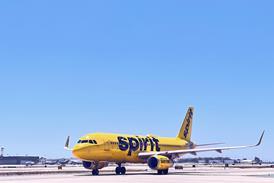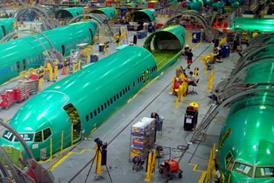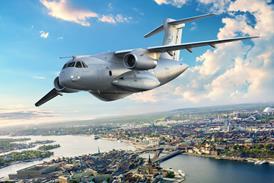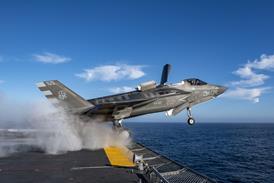Defence budgets worldwide are under immense financial pressure, leaving many modern air forces with an acute dilemma - how do they produce pilots highly trained in flight and attack techniques, in the minimum amount of time, with the earliest exposure to sophisticated, frontline equivalent fourth-generation fighter systems, at the minimum cost and with the lowest environmental impact?
The old definitions of elementary, basic, advanced lead-in, advanced, tactical weapons and so on for training courses are arguably obsolete. What may be needed in future is a trainer that is docile in handling and yet with such high performance and in-built (embedded) sophisticated simulated training systems that it can replace three or four types and cover a complete air force's generic training programme.
This type will require a new classification as a flight, attack and systems trainer (FAST) aircraft. If the FAST is allied to a lead-in fighter trainer (LIFT), which has similar systems to the FAST and comparable performance to the designated air force frontline fighter, it can be argued that expensive, single-type, operational conversion units (OCU) could be disbanded and the final, frontline "type conversion" training given within the full-strength combat wing of the type itself.
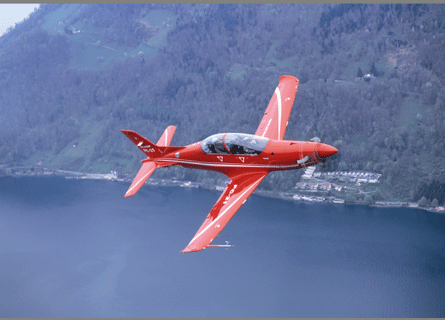 |
|---|
© Pilatus |
Pilatus has recognised this training need and its all-new PC-21 (in service with the Singaporean and Swiss air forces) is the FAST aircraft/training package it is now producing to fulfil modern air force training needs through the first half of the 21st century.
Having flown a wide variety of propeller, turboprop and jet trainer types with differing performance levels, plus many Western second- to fourth-generation fighters/fighter bombers, my role was to act as an experienced test pilot assessing the PC-21 for a ministry of defence-type procurement agency. My objectives were threefold: does the PC-21 have the full range and sophistication of systems to be truly labelled as an effective FAST type aircraft? Can the PC-21 take the place of three or four present-day trainer types without compromise at either end of the performance envelope? Can the PC-21 properly replicate the intended frontline fighter type (in this case the Boeing F/A-18) in air force service?
PILATUS DILEMMA
Pilatus has built and sold more than 800 PC-7/9 variants. The Swiss manufacturer had to decide if it should continue to produce the PC-9 in a narrowing market (the PC-9M is still assembled in low numbers) or opt for a new, clean-sheet design as its leading military trainer. It chose the latter - and the resultant PC-21 is a completely new aircraft that differs from the PC-9 in its design, materials, production methods and systems.
First flight of the PC-21 prototype was in July 2002 and full certification was achieved in December 2006. This certification was to Swiss CS-23 Regulations (fully harmonised with EASA-23) governing light commuter-type aircraft. Individual Swiss military certification additions such as ejection seats have been applied as appropriate. The spin-off advantage of civil type certification is that civilian companies managing military programmes, such as pilot/aircrew training, can raise capital from banks to purchase the aircraft/training package rather than have it funded directly from a defence budget.
To date, 27 PC-21 production-standard aircraft have been produced, with 19 delivered to the Singaporean air force, six to the Swiss air force (with an F/A-18 cockpit) and two company demonstrators (one Lockheed Martin F-16 and one F/A-18 cockpit). Pilatus owns the intellectual/design rights to its mission computer software and its digital architecture and says it can also customise the PC-21 cockpit to further replicate other modern fighter types such as the Dassault Mirage 2000, Eurofighter Typhoon and Saab Gripen within six to 12 months, depending on the exact fidelity required. This customisation to replicate a primary frontline fighter will become a major selling point for any FAST type.
Pilatus says the direct operating cost of the PC-21 is less than half of its nearest competing jet FAST type, is only one quarter of the acquisition cost of a modern, complementary, LIFT type aircraft and 40 times cheaper to operate per flight hour than a modern fighter as required on an OCU. These economies are hugely powerful in their own right, but the critical question is how effective is the PC-21 as a FAST type?
At the heart of the PC-21's performance is the Pratt & Whitney PT6A-68B, delivering 1,600shp (1,190kW) and driving a five-bladed, graphite, non-reversible, Hartzell propeller. However, and uniquely for the PT-6A family of engines, this massive power is delivered through a power management control (PMC) system that is airspeed dependent.
From 0-80kt (0-150km/h), the engine delivers 1,080shp and the power then rises linearly during acceleration to give the full 1,600shp by 200kt. Pilatus has patented this system and I believe it to be a major enhancing design feature. The -68B with PMC now delivers jet type thrust and in a jet-like way. Allied to the engine PMC is an automatic yaw trim control that maps power, speed and altitude so that the aircraft is yaw free (to the pilot) throughout its envelope and it can be flown like a jet with the pilot's feet "on the floor".
The new short-span wing features a swept leading edge and a high-speed profile allowing for a VMO of 370kt and a sustained low-level cruise of just over 320kt. Controls are manual with servo tabs, but the ailerons are hydraulically boosted with interconnected spoilers to give a roll rate in excess of 200°/s. Airframe limits are +8g/-4g and it has a pressurised cabin up to the service ceiling of 25,000ft (7,620m). Initial sustained rate of climb at sea level is 4,000ft/min (20.3m/s). The aircraft features the latest Martin-Baker MkCH16C zero-zero ejection seats with command ejection, an anti-g system and an on-board oxygen generating system for the crew. The single-piece, side-hinged canopy has no forward arch and is fully bird-strike protected.
IN THE COCKPIT
The front and rear night vision goggle-compatible glass cockpits each has three 6 x 8in (150 x 200mm) liquid crystal displays, an up-front control panel, a head-up display in front and a HUD repeater in the rear. The throttle is a jet-type single lever and the hands-on throttle and stick (HOTAS) controls, plus head-up and head-down symbology, are customised to replicate the designated frontline fighter almost exactly.
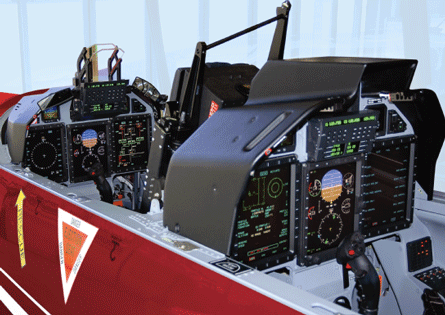 |
|---|
© PilatusThe PC-21 cockpit can be customised to replicate modern fighter aircraft |
The mission computer holds the navigation route, target plan, simulated (seven pylons) weapons fit and all the embedded training and simulated threats for the sortie. The mission computer is loaded via a pilot-carried "data brick" inserted into a slot on the left-hand front cockpit console. The Pilatus-designed digital avionics architecture ensures that all mission-dependent software is kept separate from the flight-critical pilot flying display (PFD) and engine and alerting displays software. Due to its civil certification, each cockpit also features a civil flight management system and a full autopilot - a practical enhancement.
The airframe can be "hard" fitted with five pylons (two per wing and one centreline) for external stores or ferry fuel tanks (wing inner pylons only). Two 28V/300A generators supply electrical power, allowing for complete redundancy in the event of single-generator failure. Internal fuel capacity is 560kg (1,230lb).
The aircraft is started via the combined starter/generator, using power from an internal 24V/25Ah battery, which removes the need for external power carts. A second 24V/18Ah battery maintains all avionics and loaded mission systems online during start. For turnaround, the aircraft has a single point pressure refuelling and a health usage monitoring system. All maintenance is done "on condition", needing only semi-skilled technicians. The airframe will have no planned "depot" service schedule requirements during its lifespan.
The PC-21 to be flown was the company F/A-18 demonstrator, HB-HZD. The plan was for a singleton low-level navigation route with a pre-programmed, mission computer-designated, air-to-ground target. This was to be followed by a climb to medium level for spinning before joining a second PC-21 (HB-HZC) that was to act as target for our air-to-air intercepts, with us using embedded simulated AMRAAM (active), Raytheon Sparrow (semi-active) and Raytheon AIM-9 (infrared) missiles firing as the fighter.
The target would also simulate active embedded chaff and flares to defeat the missile shots where possible. A tail chase for simulated air-to-air guns and then close formation would complete the upper air assessment before returning as a pair for the break into the close pattern for a number of circuits and a practice force-landing profile.
My safety pilot was Muz Colquhoun, an ex-UK Empire Test Pilot School tutor and now the senior experimental test pilot for the PC-21 programme. Flying the target PC-21 was Matt Hartkop, an ex-US Navy F/A-18E/F Super Hornet pilot and a veteran of air operations over Afghanistan and Iraq.
Entry on to the left-wing root was easily facilitated using a drop-down step that then closed automatically up into the fuselage with canopy closure, a design feature that negates the need for external steps. The ejection seat is well positioned, comfortable and height adjusted electrically. With initial "left to right" pre-start checks taking less than 60s to complete, the canopy was swung closed and locked manually. I was impressed with the outstanding field of view from the front cockpit: not only could I turn and see the tips of either horizontal stabiliser, but the lack of a front canopy arch eliminates any forward blind spot.
SIGHT LINES
Equally impressive is that the heavily sloping nose of the PC-21 means that the forward and down pilot sight line, so important in low-level navigation/ground attack, is almost as good as that of a short-nose jet trainer and in complete contrast to the older type turboprop long-nose trainers I had flown previously.
Depressing the start button and placing the throttle into the idle detent at 15% NG achieved engine start. Engine stabilisation then took about 30s and was fully automatic. With the generators switched on line, the mission computer and all LCD cockpit screens were selected on, the pre-planned mission number selected from the loaded data brick, aircraft systems (hydraulics, electrics, fuel, and so on) checked via the synoptic pages, flaps were set to take-off - and we were ready to taxi no more than 2min after pressing the start button.
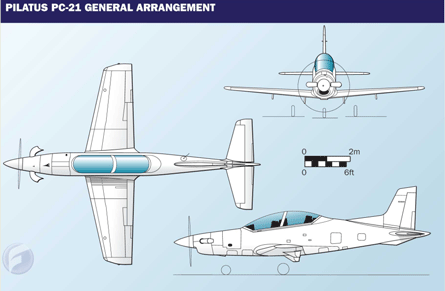
A typical screen configuration is to have a digital map on the left-hand screen, PFD centre, engine synoptic page on the right, changing this to the radar display or armament panel as required when airborne. Apart from gear and flap selectors, there is no need for the pilot to go "heads in" for the rest of the flight - the HUD has sharply defined (F/A-18) symbology and the complete HUD "picture" can be viewed without the need to move your head. This is a cockpit that should inspire confidence in any student at any stage of training.
Coming off the chocks, I found the PC-21 easy to steer accurately, with progressive and effective brakes. For our take-off from Buochs Runway 25, our all-up weight was 3,043kg (against a maximum aerobatic take-off weight of 3,100kg), outside air temperature 13°C (55°F) and QNH 1,016hp.
FULL POWER
Take-off was from full power from the brakes, with the throttle slammed by me from idle to the maximum position in about 1s to prove that the engine exhibited no torque overshoot. Upon brake release the aircraft accelerated in the linear fashion of a jet and without the typical power "grab" that can often characterise turboprops with bigger propellers and changing blade angles. Only a small "squeeze" of right rudder was needed to hold the runway centreline initially, but thereafter I never consciously touched the rudder again until turning off the runway after the final landing. Take-off roll was around 600m and the rotate indicated airspeed (TO flap) of 92kt was reached about 13s after brake release. Gear was raised immediately and was "up" within 3s. Flaps were brought up at 120kt with just a hint of nose-down trim just as they became fully retracted.
FLIGHT CONTROLS
The aircraft climbed to 4,000ft QNH and rapidly accelerated to the initial cruise of 270kt indicated airspeed. During the acceleration and cruise the PC-21 continued to feel exactly like a jet aircraft. The flight controls immediately felt light, powerful, accurate and well harmonised to such an extent that it was hard to believe they were not fully hydraulically actuated. The roll rate of around 200°/s, with no trace of adverse yaw, was immediately impressive.
Although the aircraft instantly felt "lively" and "fighter like", it was still delightfully easy to fly a desired flightpath, accurately trim or hold it stable around neutral. Just 3min after take-off I had completely forgotten the aircraft was a turboprop - the PC-21 truly delivered its power and flew like a jet in all respects.
Entering to low level we accelerated to 300kt at 500ft above ground level. Fuel flow at this speed was 250kg/h. Gust response in the low-level ride was excellent and similar to a swept wing. The aircraft felt comfortable at this speed and still had power in reserve to reach 320kt to recover a "late over target" command in the HUD. The HUD navigation symbology was clear and easy to follow. Turns of 4-5g, including loaded reversals to simulate formation manoeuvring, were a delight to fly, with no speed loss, no hint of wing buffet. It reminded me of the Mirage 2000. The low-level target position showed in the HUD with a target box for the constantly computed impact point retard bombs that replicated a modern weapons attack.
Air-to-ground guns were equally accurate to use. I could reload the planned mission pylon weapons/gun as many times as I wanted. If a target is accurately marked and global positioning system-surveyed, the aircraft can bomb, rocket and gun continually and students can have their weapon scores instantly analysed and displayed.
A PC-21 FAST type training unit could establish a weapons range on, say, a nearby disused airfield, which would negate the need for the aircraft to transit tens, if not hundreds of kilometres, to drop a real bomb/fire a real gun and with no chance of an airborne "reload". The possibilities this opens up for weapons training are almost limitless.
Climbing to medium level at around 11,000ft, we conducted two, six-turn spins: one left and one right. Spin behaviour was similar in both directions, with the nose down around 20-30°, mildly oscillatory in pitch, 4-5s to complete each turn and a 500ft height loss per turn. Spin recovery was immediate, with rudder set neutral and stick forward and took 1,000-2,000ft of further height loss to achieve level flight. The spin modes will hold no dangers to student pilots.
Climbing further, to around 17,000ft in the military training area, we then set up the air-to-air intercepts with the PC-21 target. The two aircraft were "connected" by Mode S datalink and by designating the target PC-21 as a "foe", the aircraft symbol was displayed in red on our digital map at its real geographical position.
We carried out seven "canned" intercepts with the right-hand LCD screen set up as a radar B scope display and with the target displaying as a real aircraft on the radar screen using the datalink to supply the embedded data simulation. I selected - using HOTAS - missile type, radar modes, radar search techniques, kill parameters, lock-up and firing, and so on. Kill notification was seen on our radar screen and by the target. The HUD showed target box, range, firing cue, etc, exactly as it would for a real AMRAAM/Sparrow/IR missile type.
SUPERB SIMULATION
Audio "growl" supplemented the IR missile lock. The level and sophistication of the air-to-air embedded simulation was superb. Not only did I believe that I was flying a jet, I now believed I was flying and fighting in an F/A-18E/F. Even beyond this, the instructor, sitting front or back, has the ability to input single or multiple air-to-air targets on to the student's radar screen using a cockpit screen selection page and without the need for another PC-21 to act as a real target. Again, the training possibilities this gives for air-to-air practice are endless and the PC-21 FAST may dictate a new kind of instructor.
A tail chase at around 300m in line astern then showed that air-to-air guns tracking mode was accurate and predictive. The wing manoeuvre boundary could be "played" between the light to medium buffet, with no wing rock and typical of swept wing-like behaviour. The close formation showed the aircraft's closed loop handling characteristics to be excellent. The PC-21 would make a fine teaching platform for formation techniques and formation aerobatics.
Visual circuits back at Buochs were flown at 3,000ft QNH (roughly 1,300ft above ground level). The downwind leg was started with an indicated airspeed of 160kt, gear down, flap take-off and slowing to 130kt for the start of the finals turn.
The HUD climb/dive angle, placed level with the horizon line, meant that height keeping downwind was precise and effortless. The gear down bought up an angle of attack vertical tape in the HUD with the finals turn flown with flap LAND at around six AoA/120kt and the final approach eight AoA/110kt.
Touchdown was at around 100kt and the training link gear gave smooth touchdowns on each roller landing. Tight circuits and accurate touchdowns were easy to fly. The final landing was with the brakes applied fully after touchdown so that the anti-skid activated down to a full stop.
We turned off the runway at the taxiway 800m beyond the threshold without fuss and without any tyre/brake problems. We had been airborne for 1h 40min and on shutdown we had used exactly 400kg of fuel with 160kg remaining. This fuel capacity/usage means that, typically, two separate 1h training sorties could be completed (with reserves), but without the need to refuel during turnaround.
Although other manufacturers talk of embedded simulation in their trainer aircraft, the PC-21 can demonstrate those embedded systems today and for real. Importantly, Pilatus has already completed the entire training package of computer-based training devices, flight-approved fixed-base simulators, digital mission planners, and supplied PC-21s with customised frontline fighter cockpits and digital mission debrief systems to the Singaporean and Swiss air forces. Pilatus and the PC-21 have set the benchmark for other trainer aircraft to aspire to.
CONCLUSIONS
To answer my own set objectives: the PC-21 is so loaded with sophisticated, equivalent fourth-generation fighter type simulated systems and training potential it can, without doubt, be classified as a new type of FAST-type aircraft.
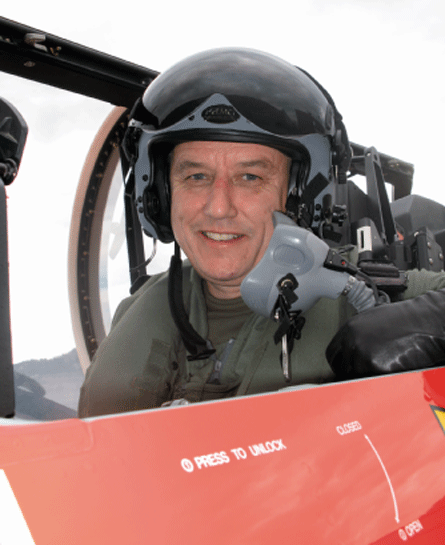 |
|---|
Peter Collins flight tests the new Pilatus PC-21 |
The PC-21 is a delight to fly in all regimes and I believe a modern air force would have no problems (post-student pilot screening) in replacing a training fleet of three to four current aircraft trainer types with the PC-21 as its single type. The PC-21 FAST would also be an ideal complement to a higher-performance LIFT-type aircraft. The PC-21 does not just simulate a modern frontline fighter "in some aspects" - within a few minutes of take-off I completely believed that I was flying a jet, and that I was also operating and fighting in the F/A-18 that the cockpit customisation was designed to replicate.
If I could use just one adjective to describe the PC-21, it would be "stunning".
Source: Flight International

